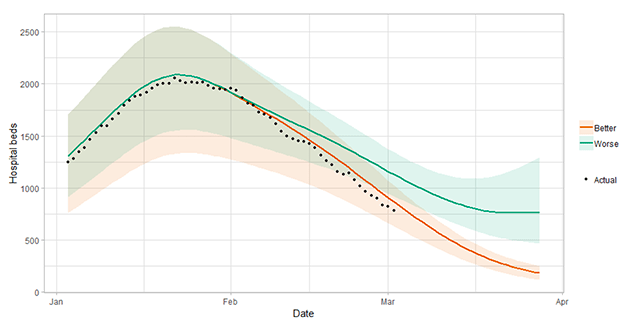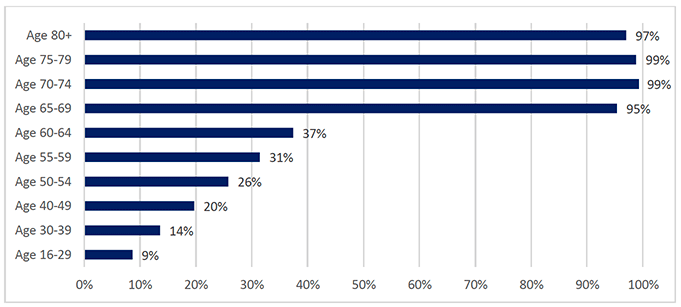Coronavirus (COVID-19): state of the epidemic - 5 March 2021
Brings together the different sources of evidence and data about the covid epidemic to summarise the current situation, why we are at that place, and what is likely to happen next.
Looking ahead
Changes in patterns of mixing and adherence to restrictions will impact on future case numbers. The Scottish Contact Survey measures times and settings that people mix where they could potentially spread Covid. From this survey we can say that interactions has remained low throughout January and February (currently 3.1 average daily contacts)2.
In the last two weeks however increases in contacts have been reported for those aged over 50. Individuals 65 and over who have been vaccinated have a higher level of contacts in comparison to those who have not. We will continue to monitor changes in behaviour as the vaccine roll out continues.
There is high level of reported compliance with the Stay at Home regulations that came into effect on 5 January. On 2-4 March, 75% of people reported 'complete' or 'almost complete' compliance[10].
Hospital bed and ICU occupancy are projected to fall over the next few weeks, but with the potential to plateau or increase as a result of schools reopening (Figure 5)2.

Vaccinations are continuing across the priority groups. The first vaccines were administered on Tuesday 8 of December and 1,688,608 had received their first dose by 4 March 2021, a 11% increase from the 25 February5. By the 4 of March over 31,000 residents in older adult care homes had received their first vaccination along with over 45,000 older adult care home staff. 97% of individuals aged 80 or over had received their first vaccination (Figure 6). It is anticipated that vaccination will reduce infection levels in the most vulnerable in the coming weeks and months. There are now indications of decreasing case rates and deaths among those groups vaccinated first.

The proportion of people surveyed who said they would be likely to be vaccinated for COVID-19 remains high. 39% of all respondents have already received their first vaccine and of those not 81% report they are likely to be vaccinated when a vaccine becomes available to them.[11]
Contact
There is a problem
Thanks for your feedback